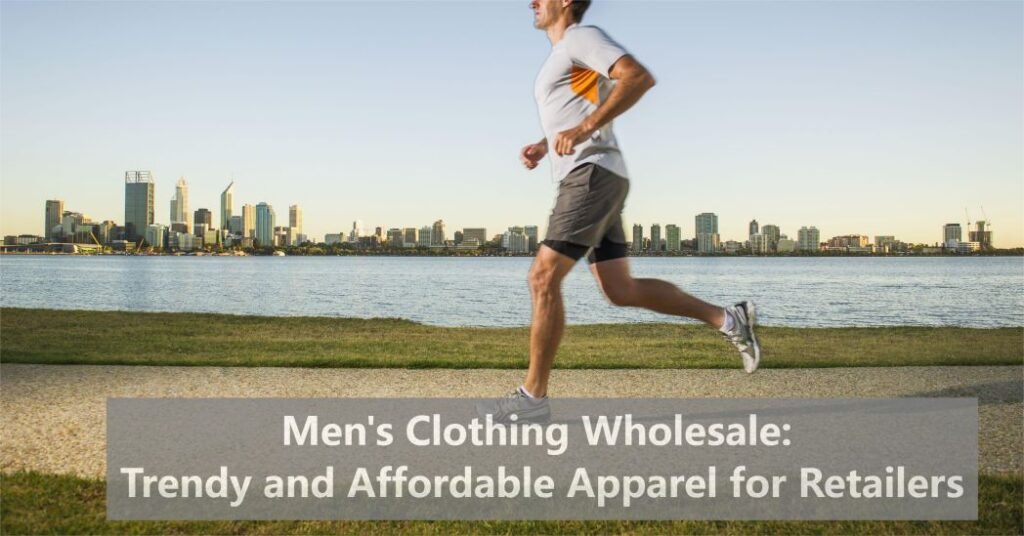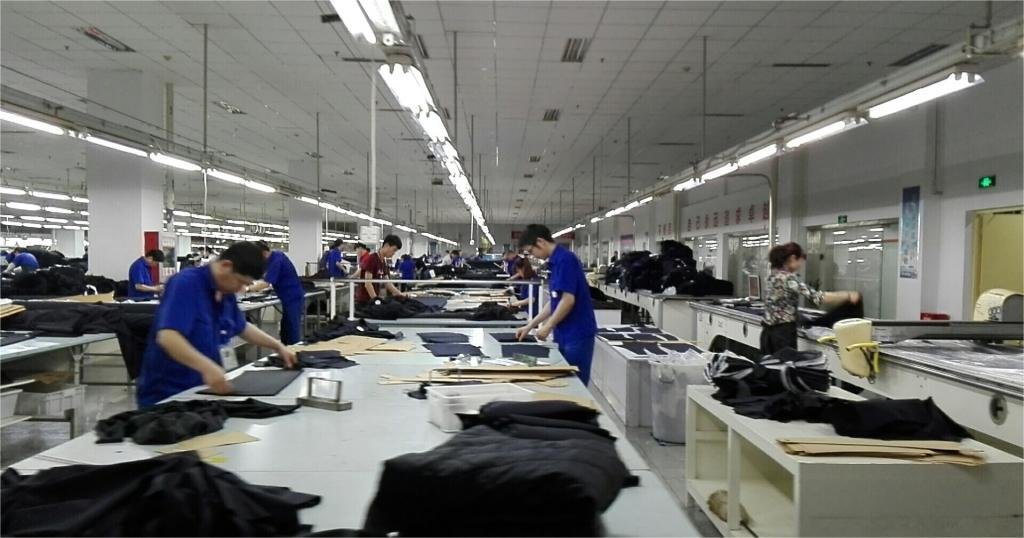No products in the cart.
Custom Yoga Pants
Men’s Clothing Wholesale: Trendy and Affordable Apparel for Retailers
Introduction to Men’s Clothing Wholesale
Men’s clothing wholesale is a thriving industry that offers retailers the opportunity to stock their stores with trendy and affordable apparel. Wholesale suppliers provide a wide range of clothing options, from casual wear to formal attire, allowing retailers to cater to the diverse fashion needs of their male customers. This article will explore the benefits of buying wholesale men’s clothing, the top trends in men’s fashion, how to find the right wholesale supplier, and tips for building a successful men’s clothing retail business.

Benefits of Buying Wholesale Men’s Clothing
There are several advantages to purchasing men’s clothing wholesale. Firstly, buying in bulk allows retailers to take advantage of lower prices. Wholesale suppliers offer discounted rates for larger orders, enabling retailers to maximize their profit margins. Additionally, buying wholesale eliminates the need for retailers to negotiate with multiple suppliers, streamlining the purchasing process and saving valuable time.
Another benefit of buying wholesale men’s clothing is the wide variety of options available. Wholesale suppliers typically stock a vast selection of clothing items, ensuring that retailers can cater to different style preferences and sizes. This variety allows retailers to attract a broader customer base and increase their chances of making sales.
Top Trends in Men’s Fashion
To succeed in the men’s clothing retail business, it is crucial to stay updated on the latest fashion trends. Currently, there are several key trends dominating the men’s fashion scene. One of these trends is athleisure wear, which combines athletic and leisure clothing to create comfortable yet stylish outfits. Athleisure wear includes items such as joggers, hoodies, and sneakers, which are perfect for casual and sporty looks.
Another popular trend is sustainable fashion. With increasing awareness about environmental issues, many men are opting for clothing made from eco-friendly materials. Retailers can cater to this trend by stocking organic cotton t-shirts, recycled denim jeans, and sustainable footwear options.
In terms of colors, earthy tones such as olive green, rust, and mustard yellow are currently in vogue. These colors add a touch of sophistication to any outfit and can be incorporated into various clothing items, including jackets, sweaters, and trousers.
Finding the Right Wholesale Supplier
Finding the right wholesale supplier is crucial for retailers looking to stock their stores with trendy and affordable men’s clothing. One way to find reputable suppliers is by attending trade shows and industry events. These events provide an opportunity to connect with multiple suppliers, compare their offerings, and establish relationships.
Online directories and marketplaces are also valuable resources for finding wholesale suppliers. Websites like Alibaba, Wholesale Central, and FashionGo allow retailers to browse through a wide range of suppliers and their product offerings. Retailers can read reviews, compare prices, and contact suppliers directly through these platforms.
Quality vs. Affordability: Striking the Balance
When purchasing wholesale men’s clothing, retailers must strike a balance between quality and affordability. While it is essential to offer affordable options to customers, compromising on quality can harm a retailer’s reputation and lead to dissatisfied customers.
To ensure the quality of wholesale clothing, retailers should request samples from potential suppliers before placing bulk orders. This allows retailers to assess the fabric, stitching, and overall craftsmanship of the clothing items. Additionally, retailers should research the reputation of the supplier and read customer reviews to gauge the quality of their products.
Must-Have Men’s Clothing Items for Retailers
To attract customers and boost sales, retailers should stock their stores with must-have men’s clothing items. These items include versatile basics that can be easily mixed and matched to create various outfits. Some essential clothing items for men include:
1. T-shirts: Basic t-shirts in neutral colors are a wardrobe staple for men. Retailers should offer a range of sizes and styles, including crew neck and V-neck options.
2. Button-down shirts: Classic button-down shirts in both formal and casual styles are essential for any men’s clothing store. Retailers should stock shirts in different patterns, such as stripes, checks, and solids.
3. Jeans: Denim jeans are a timeless piece of clothing that every man needs. Retailers should offer a variety of fits, including slim, straight, and relaxed, to cater to different body types.
4. Jackets: Jackets are versatile pieces that can elevate any outfit. Retailers should stock a range of jackets, including denim jackets, leather jackets, and bomber jackets.
5. Shoes: A good selection of footwear is essential for any men’s clothing store. Retailers should offer a variety of styles, including sneakers, dress shoes, and boots, to cater to different occasions.

How to Market Wholesale Men’s Clothing
Marketing plays a crucial role in attracting customers to a men’s clothing retail business. Retailers should utilize various marketing strategies to promote their wholesale men’s clothing offerings. Here are some effective marketing techniques:
1. Social media marketing: Retailers should create a strong presence on social media platforms such as Instagram, Facebook, and Twitter. They can showcase their clothing items through high-quality images, engage with customers through comments and direct messages, and collaborate with influencers to reach a wider audience.
2. Email marketing: Building an email list allows retailers to directly communicate with their customers and inform them about new arrivals, promotions, and discounts. Retailers can offer incentives such as exclusive discounts or early access to new collections to encourage customers to sign up for their email list.
3. In-store events: Hosting in-store events, such as fashion shows or trunk shows, can attract customers and create a buzz around the store. Retailers can collaborate with local influencers or fashion bloggers to promote these events and attract a larger audience.
4. Collaborations: Partnering with other businesses, such as barbershops or gyms, can help retailers reach a new customer base. Retailers can offer exclusive discounts or promotions to customers of these businesses, creating a mutually beneficial partnership.
Tips for Building a Successful Men’s Clothing Retail Business
Building a successful men’s clothing retail business requires careful planning and execution. Here are some tips to help retailers thrive in this competitive industry:
1. Identify your target market: Understanding your target market is crucial for tailoring your product offerings and marketing strategies. Retailers should conduct market research to identify their ideal customer and their preferences.
2. Offer excellent customer service: Providing exceptional customer service can set a retailer apart from its competitors. Retailers should train their staff to be knowledgeable about the products, offer personalized recommendations, and handle customer inquiries and complaints promptly.
3. Stay updated on fashion trends: To remain relevant in the men’s clothing industry, retailers must stay updated on the latest fashion trends. Retailers should regularly attend fashion shows, read fashion magazines, and follow influential fashion bloggers to stay ahead of the curve.
4. Create a visually appealing store layout: The store layout plays a significant role in attracting customers and encouraging them to make purchases. Retailers should create an inviting and visually appealing store layout that showcases their clothing items effectively.
Understanding the Wholesale Pricing Structure
Understanding the wholesale pricing structure is essential for retailers looking to purchase men’s clothing wholesale. Wholesale prices are typically lower than retail prices, as suppliers offer discounts for bulk orders. The exact pricing structure varies depending on the supplier and the quantity of items ordered.
Wholesale prices are often calculated based on the cost per unit, with discounts applied for larger orders. For example, a supplier may offer a price of $10 per unit for an order of 100 items, but reduce the price to $8 per unit for an order of 500 items. Retailers should negotiate with suppliers to secure the best possible prices for their orders.
Navigating the Wholesale Ordering Process
Navigating the wholesale ordering process can be overwhelming for retailers, especially those new to the industry. However, with proper planning and organization, the process can be streamlined. Here are some steps to follow when placing a wholesale order:
1. Research and select suppliers: Retailers should research and select reputable wholesale suppliers that offer the products they require. They should consider factors such as price, quality, and customer reviews when making their selection.
2. Request samples: Before placing a bulk order, retailers should request samples from potential suppliers to assess the quality of the products. This step is crucial in ensuring that the clothing items meet the retailer’s standards.
3. Negotiate pricing and terms: Retailers should negotiate pricing and terms with the chosen supplier. They should aim to secure the best possible prices and establish clear terms regarding payment, delivery, and returns.
4. Place the order: Once the pricing and terms are agreed upon, retailers can place the wholesale order. They should provide the supplier with the necessary details, including the quantity, sizes, and styles of the clothing items required.
5. Track the order: Retailers should track the progress of their wholesale order to ensure timely delivery. They should communicate with the supplier regularly to stay updated on the status of the order.

Wholesale Men’s Clothing: Online vs. Offline Suppliers
When sourcing wholesale men’s clothing, retailers have the option to choose between online and offline suppliers. Both options have their advantages and disadvantages, and retailers should consider their specific needs and preferences when making a decision.
Online suppliers offer convenience and a wide range of options. Retailers can browse through multiple suppliers and compare prices and product offerings from the comfort of their own homes or stores. Online suppliers also often provide detailed product descriptions and images, making it easier for retailers to assess the quality of the clothing items.
Offline suppliers, on the other hand, offer the advantage of personal interaction. Retailers can meet with suppliers face-to-face, discuss their requirements in detail, and even negotiate pricing and terms in person. Offline suppliers may also offer the opportunity to see and feel the clothing items before making a purchase, ensuring that the quality meets the retailer’s standards.
Conclusion: Embrace the Trendy and Affordable Men’s Clothing Wholesale Market
In conclusion, the men’s clothing wholesale market offers retailers the opportunity to stock their stores with trendy and affordable apparel. Buying wholesale men’s clothing provides several benefits, including lower prices and a wide variety of options. To succeed in the men’s clothing retail business, retailers must stay updated on the latest fashion trends, find the right wholesale supplier, and strike a balance between quality and affordability. By following these tips and strategies, retailers can build a successful men’s clothing retail business and cater to the fashion needs of their male customers.
